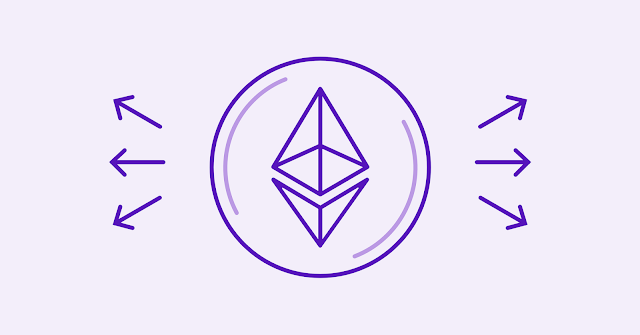Welcome to the world of Ethereum scaling solutions, where the boundaries of blockchain technology are continuously pushed to shape the future of decentralized finance. As Ethereum gains widespread adoption, the need for scalable and efficient solutions becomes paramount. In this article, we will delve into the exciting realm of Ethereum scaling solutions, exploring their impact, benefits, and how they are shaping the future of the blockchain ecosystem.
 |
| image: kleros.io |
Ethereum Scaling Solutions: Shaping the Future
Ethereum scaling solutions are designed to overcome the inherent scalability limitations of the Ethereum network, allowing it to handle a significantly higher number of transactions per second (TPS) and reducing fees. These solutions are instrumental in ensuring that Ethereum can cater to the growing demands of decentralized applications (DApps) and the expanding user base. Let's explore some of the prominent Ethereum scaling solutions that are driving this transformative change.
1. Layer 2 Scaling: Enhancing Performance and Efficiency
Layer 2 scaling solutions offer a promising approach to enhance Ethereum's performance by moving some of the transaction processing off the main Ethereum chain. These solutions utilize sidechains or state channels to process transactions more efficiently and reduce the load on the main Ethereum network. With layer 2 scaling, Ethereum can achieve significantly higher TPS, lower fees, and faster confirmation times, making it more scalable for mainstream adoption.
2. Plasma: Unlocking Scalability through Child Chains
Plasma is a scaling framework built on Ethereum that enables the creation of child chains, also known as "plasma chains," to process transactions. These child chains operate independently, with their own set of validators, while periodically submitting summarized data to the Ethereum mainnet for ultimate security. Plasma chains can handle a high volume of transactions, effectively increasing Ethereum's scalability and supporting various use cases such as decentralized exchanges, gaming platforms, and more.
3. State Channels: Off-Chain Transactions for Instantaneous Interactions
State channels provide an off-chain solution for conducting transactions instantaneously while maintaining the security and trustlessness of the Ethereum network. These channels allow participants to engage in multiple transactions off-chain, settling the final state on the Ethereum blockchain when needed. State channels enable real-time interactions, minimize transaction fees, and significantly reduce network congestion, making Ethereum more scalable for applications that require frequent and rapid transactions.
4. Rollups: Aggregating Transactions for Efficiency
Rollups are a promising scaling solution that aggregates multiple transactions into a single transaction, reducing the overall cost and increasing Ethereum's capacity. They leverage layer 2 technology to bundle transactions, compute them off-chain, and submit a single proof to the Ethereum mainnet. By doing so, rollups significantly improve scalability and reduce transaction fees, making Ethereum more accessible to users and developers alike.
5. Sidechains: Expanding Ethereum's Ecosystem
Sidechains are independent blockchains that can interact with the Ethereum network through a set of interoperability mechanisms. They enable developers to build and deploy applications that benefit from Ethereum's security while leveraging their own consensus mechanisms and scalability solutions. Sidechains expand Ethereum's ecosystem by providing additional scalability and flexibility, allowing for diverse use cases and experimentation.
6. Optimistic Rollups: Optimizing Efficiency with Fraud Proofs
Optimistic rollups are an advanced form of rollup that rely on fraud proofs to ensure the validity of transactions. These rollups assume that most transactions are valid unless proven otherwise, significantly reducing the computational burden and costs associated with transaction verification. Optimistic rollups enable faster and cheaper transactions on Ethereum, while maintaining a high level of security and decentralization.
FAQs: Exploring Common Questions About Ethereum Scaling Solutions
Q1: Why is scalability crucial for Ethereum's future?
A1: Scalability is vital for Ethereum's future because it allows the network to handle a larger number of transactions, reduces fees, and improves user experience. It enables the platform to support widespread adoption and facilitates the growth of decentralized applications.
Q2: How do layer 2 scaling solutions work?
A2: Layer 2 scaling solutions work by moving some transaction processing off the main Ethereum chain. They utilize sidechains or state channels to handle transactions more efficiently, reducing congestion and enhancing scalability.
Q3: What are the benefits of Plasma?
A3: Plasma provides a scalable framework for Ethereum by creating child chains that can handle a high volume of transactions. It enables faster transaction confirmations, lower fees, and supports various use cases such as decentralized exchanges and gaming platforms.
Q4: How do state channels improve Ethereum's scalability?
A4: State channels allow participants to conduct transactions off-chain, minimizing fees and congestion on the main Ethereum network. They enable real-time interactions and significantly enhance scalability for applications that require frequent and rapid transactions.
Q5: What are the advantages of rollups?
A5: Rollups increase Ethereum's capacity by aggregating multiple transactions into a single transaction. They reduce costs, improve scalability, and make the Ethereum network more accessible and efficient for users and developers.
Q6: How do sidechains expand Ethereum's ecosystem?
A6: Sidechains provide additional scalability and flexibility to the Ethereum ecosystem. They enable developers to build applications that interact with the Ethereum network while leveraging their own consensus mechanisms and scalability solutions.
Conclusion: A Scalable Future Awaits
As Ethereum continues to evolve, scaling solutions play a pivotal role in shaping its future. These innovative technologies are addressing Ethereum's scalability challenges, unlocking its potential for widespread adoption, and revolutionizing the blockchain industry. With layer 2 scaling, Plasma, state channels, rollups, sidechains, and optimistic rollups, Ethereum is poised to meet the demands of an ever-expanding user base and drive the next wave of decentralized applications. Embrace the potential of Ethereum scaling solutions, for a scalable future awaits.